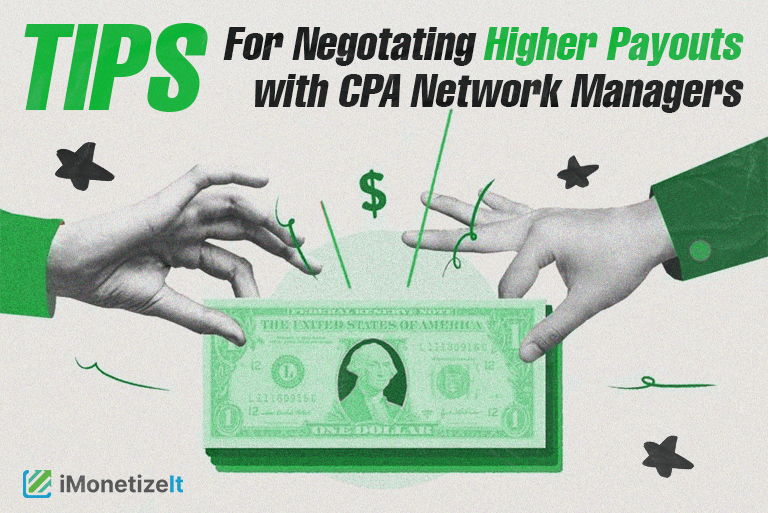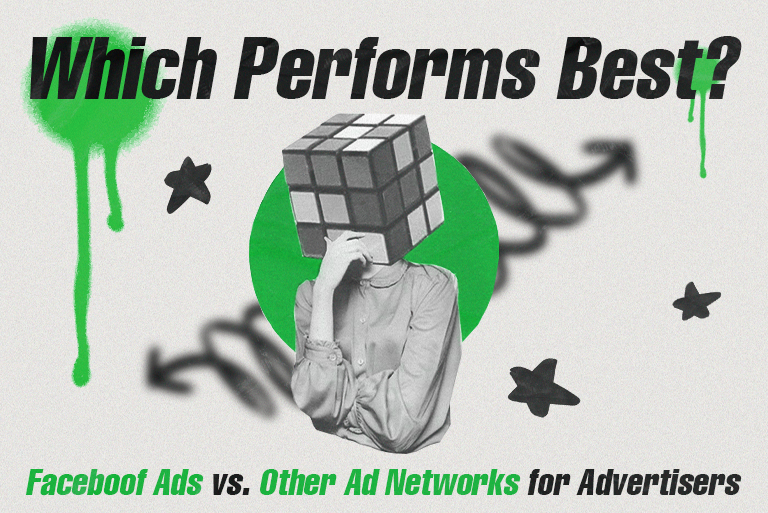CPA Marketing Glossary: Key Terms You Should Know

CPA and affiliate marketing definitions are confusing to anyone who isn’t in the industry or doesn’t have in-depth knowledge of these core concepts. If you want to start earning money online, you need to familiarize yourself with these terms.
Core Concepts
Before we dive into the affiliate marketing glossary that we’ve created, you need to understand the basics of what this form of marketing is and what networks have to offer.
What is CPA Marketing?
Cost per action (CPA) marketing is a form of marketing where the advertiser pays a publisher or affiliate to help them achieve their action goal. For example, you may promote a diet supplement and receive money for:
- A click to an offer
- Sale
- Form submission
Advertisers can opt to pay for any action they wish. Tracking allows you to monitor all actions to the offer and profit from the conversion.
The CPA Model Explained
CPA models revolve around:
- Affiliates (you)
- Advertisers (the business)
An advertiser will work with a CPA network to promote a product. Affiliates of the network can apply to promote the offer, and if approved, they’ll promote the offer on the advertiser’s behalf. For example, you may own a fitness blog and promote weight loss supplements.
Since your audience likely wants to lose weight, you’re bound to make sales because you have very targeted traffic.
Understanding CPA Networks
A CPA network is the “middleman” of the transaction. Publishers will apply to be a member of the network, and it’s the responsibility of the network to:
- Verify publishers
- Ensure publishers have legitimate traffic
- Connect publishers with advertisers
The network will track your earnings, pay you and also have anti-fraud systems in place to ensure that neither the advertiser nor publisher are engaging in fraud of any kind. Your network will manage all correspondence with the advertiser and work with you to earn as much money as possible.
In terms of payment, you can also earn money in three main ways:
- Pay per sale: The publisher may receive either a flat fee or a commission for each sale made.
- Pay per action: You can earn on any action identified in the program’s terms. For example, you may earn money for a sale, email sign-up, trial sign-up, or any other action that the publisher wants people to take.
- Recurring payments: Some affiliate programs will pay you on a recurring basis. For example, if the lead is on a subscription, you may earn money for each month that the person pays for the subscription.
As your sales grow or you increase the number of leads that you send the advertiser, you may start to earn more. Amazon is a prime example of an advertiser who pays in tiers. The more sales you drive for the advertiser, the more they pay with tiered pricing structures.
Key Affiliate Marketing Definitions
You have quite a few affiliate marketing definitions that you’ll learn while being a publisher, but the most common are:
Conversion
A conversion is an action that is taken by the lead you sent to the advertiser’s offer. Traffic may be the conversion goal, but conversions are often signing up for a trial, purchasing a product or subscribing to a newsletter.
Affiliate
One of the most common affiliate marketing keywords to know is “affiliate.” In the world of marketing, an affiliate is either an individual or a company. These entities are responsible for marketing an offer on behalf of an advertiser.
For example, if you own a blog about dogs, you may become an affiliate for a pet food company and promote their food on your blog.
As an affiliate, when a visitor on your site clicks on the company’s offer and makes a purchase, you will be paid.
Offer
The word “offer” is one of the most common terms used in affiliate marketing. An offer can be a:
- Product
- Email sign-up
- App download
- Other action
Essentially, it’s what the affiliate is trying to “offer” to earn commission.
Landing Page
A landing page is a tool used by affiliate marketers to increase conversions and commissions. These are special web pages designed to encourage visitors to take specific actions. They contain affiliate marketing keywords and compelling copy that persuades visitors to take the next step.
Typically, the desired action is to make a purchase, but affiliates can also make landing pages to get email sign-ups, app downloads, and more.
Traffic Sources
In affiliate marketing, traffic sources refer to the platform that takes customers to your affiliate landing page, blog or social media page.
Examples of traffic sources include:
- Google Search
- Display advertisements
- TikTok
Traffic sources are important because they have a significant impact on conversion rates.
EPC (Earnings Per Click)
EPC is one of the many unique affiliate marketing terms you’ll see. It stands for “earnings per click.” This metric shows the average earnings you receive each time someone clicks on one of your affiliate links.
EPC is an important metric because it helps you determine which campaigns are driving your desired results.
Earnings per click are calculated using the following formula:
- Total commissions earned / number of affiliate link clicks = EPC
ROI (Return on Investment)
The acronym ROI stands for return on investment. In affiliate marketing, ROI refers to your earnings on a sale after subtracting costs.
- Revenue – costs = ROI
The higher the ROI, the better. A good ROI will depend on your niche and expectations. Some marketers are happy to have a positive return on investment. Others aim for an ROI of 10% or more.
However, if you’re not getting a negative ROI, this means that you’re spending more money on your marketing than you’re earning.
Click-Through Rate (CTR)
Another common acronym in affiliate marketing terminology is CTR, which stands for click-through rate.
Essentially, CTR tells you how often people click on your ad when they see it. Click-through rates are calculated using the following formula:
- CTR = clicks / impressions
Marketers use this metric to gauge how well their ads and keywords are performing. The higher the CTR, the better. Ads, listings or keywords with low CTRs can be improved or removed, depending on the performance.
Call to Action (CTA)
One thing you’ll often see in affiliate marketing terminology is the acronym CTA, which stands for call to action.
A CTA asks the visitor to take an action of some kind, whether it’s to schedule a call, subscribe to a newsletter, sign up for a free trial or purchase a product.
Here are some examples of CTAs:
- Download now
- Sign up to get weekly tips
- Book a free assessment
- Buy now
- Get your free trial
Adding CTAs to your landing pages and a copy will help visitors take the next step in the customer journey.
Summary
These are the most important affiliate marketing terms to know.
If you’re just getting started as an affiliate, click here to sign up for the IMI CPA network.






